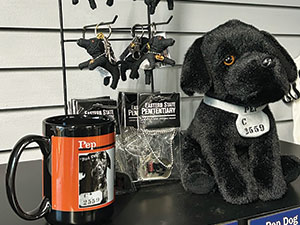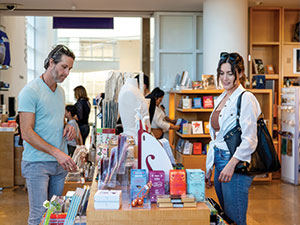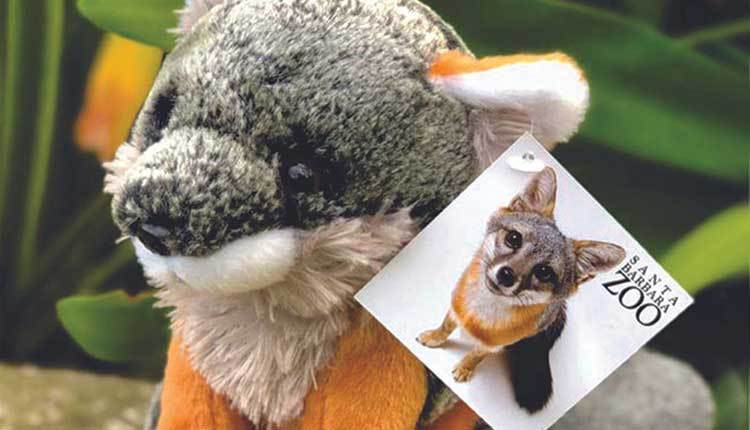Custom products can help destination retailers capture the unique aspects of their location and make mementos even more special. Retailers in tourist destinations are trying to find ways to capture their site’s unique characteristics in the gifts they offer. And rather than take an existing product and branding it with their logo, some of these retailers are taking things one step further by working with vendors to develop custom products. And the extra effort is paying off.
Lorne Kotzer’s company Soft Stuff Creations creates custom plush for a variety of customers from the The Art Institute of Chicago to The Santa Barbara Zoo. He says that while a name-drop program is typically decorating an existing stock item with the customer’s logo or artwork, “a custom item is a unique new item created from the customer’s artwork, design or theme.”
According to James Melley, sales manager for the wholesale company Impulse Souvenirs, “Offering custom products can increase your customers’ buy. Most visitors will be shopping multiple stores and by having unique designs that can’t be found elsewhere, you could attract more sales.”
Melley adds that “Customization allows more unique elements for the entire design to capture the essence of your destination.”
Breaking out into customThis is the case for Eastern State Penitentiary Historic Site in Philadelphia. Gifts and souvenirs not only portray the historic site that housed inmates from 1829 to 1971, merchandise features some of the prison’s most notorious residents, including famed mobster Al Capone and a dog named Pep. The black lab came to the prison in 1924 and was given an actual intake number and had his mugshot taken. Rumors spread he was sent there for murdering the governor’s wife’s cat, but his arrival was actually a way help boost morale among the prisoners.
 Pep is a popular souvenir for the Eastern State Penitentiary Historic Site in Pennsylvania. The site opened as a museum in 1994 and then in the mid-2000s, the mission of the site shifted from not only a museum but a conduit for opening up a dialogue about mass incarceration in America.
It’s the job of Richie Sklar, manager, visitor services and retail, to not only create products that serve as souvenirs, but that also represent the mission and help people start the conversation around incarceration.
To accomplish this, the store offers products that are more souvenir oriented and others that are historically based and mission based.
“Because we are a very specific type of museum, there really isn’t a lot of merchandise out there that is geared toward us,” Sklar says. “We are really very limited in what already exists out there, and that’s why we turned to custom products.”
But that is not the only reason for developing custom products. It is also about the customer. “Because we are such a unique organization, people want to find something unique when they come here,” he says. “I believe it’s not just about creating a gift or a souvenir, but really something that reminds them of a little bit of what they’ve learned or something they really liked while they were at Eastern State so that’s another big reason why we do all custom items.”
The creative processTo create custom items, Sklar says he relies on his vendors for collaboration in addition to local artists and in-house graphic designers. He’ll often try to seek out vendors who work with people that are formerly incarcerated. Souvenirs will often include the Eastern Penitentiary logo or the radial design blueprint of the prison will be imprinted on objects. Visitors can also purchase a plethora of items with Al Capone’s mug shot on it.
As for Pep, the famous pup, the store carries a variety of items with his image, including a coffee mug and a postcard, but the Pep plush is by far the most popular. For this product, Sklar worked with Soft Stuff Creations to develop a product bearing his likeness with soft, cuddly features, and the store can’t keep it in stock.
The store’s bestselling T-shirt is a custom design that features the prison’s radial design, and shot glasses also fly off the shelves. “We have a couple of cool custom shot glasses. One that has Al Capone on it that sells really well.”
The store also carries objects that are recreations of artifacts. “We recently did a replica of the original front gate key which was crafted from a 3-D model. We used historic photographs of the original gate key as its basis.”
There’s also a tin cup that was based on an artifact that was found in the early 1990s during the excavation and restoration process. “We have a lot of things that were actually found here and things that we know were actually part of the history,” he says.
As for the mission-based merchandise, Sklar says, Eastern State Penitentiary is just beginning to scratch the surface. “We’re focusing on using a group of key phrases.”
The key phrases are all about getting people to think about prisons and incarceration. The phrases are featured on wristbands, pencils and a line of journals.
A good ‘impression’ Products like journals that are licensed by the Getty Museum can be purchased all over the world. The Getty Museum with locations in Los Angeles and Pacific Palacades, and a robust online store, carries a variety of merchandise in its stores from apparel, jewelry, gifts, stationary and books. Custom designs include products that feature paintings from the museum as well as fragrances, holiday ornaments, scarves, stationary and sculpture.
Thomas Stewart, head of retail merchandising and Chloe Simon, general manager, both say that visitors to the museum are moved by the artwork they see so it is their job to capture that experience in the form of a gift or keepsake.
“Licensing is a large part of this process, and our vendor partners can provide things like gift merchandise and replicas that are inspired by the collection,” says Stewart. “When a product is licensed, like our journals from PaperBlanks or sculpture from Parastone, these items can be purchased all over the world, telling the Getty story to a global audience.”
You can also find a plush dragon inspired by the museum’s illuminated manuscript bestiary designed by Soft Stuff Creations and a Griffin handpuppet, part eagle poised on a lion body of strong rear legs and long tufted tail. But by far, the most popular keepsakes are anything that depicts the museum’s impressionist painting collection.
Stewart and Simon also lean on the Museum Store Association. “Museum stores are unique shopping destinations in that we are all in one large community that helps each other and shares advice,” says Stewart.
At Impulse Souvenirs, unique designs can be applied to an array of products from the ever-popular magnets and tees. “Customized patches can be applied to caps, beanies or even bags to create a collection of great quality products. When customers see great art, it sells,” concludes Melley.
|




